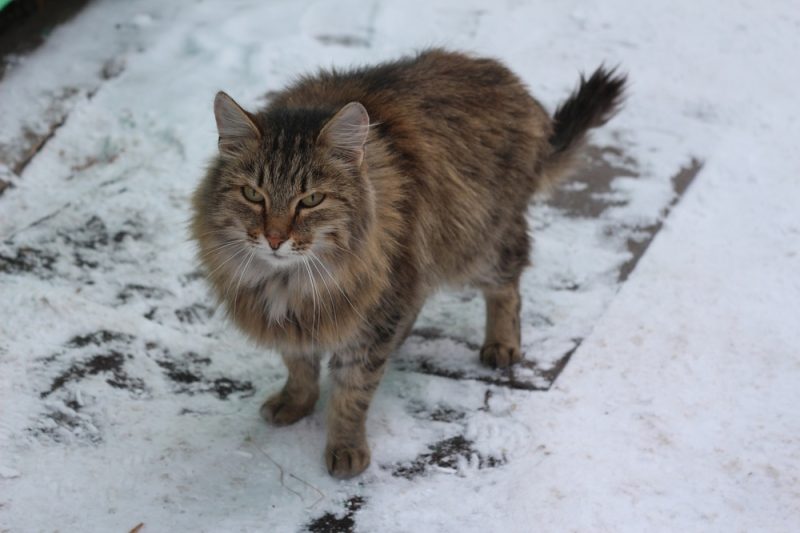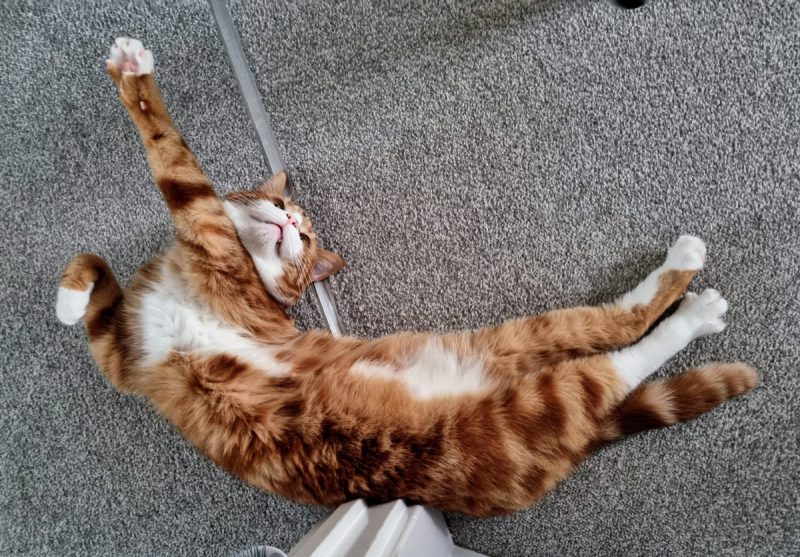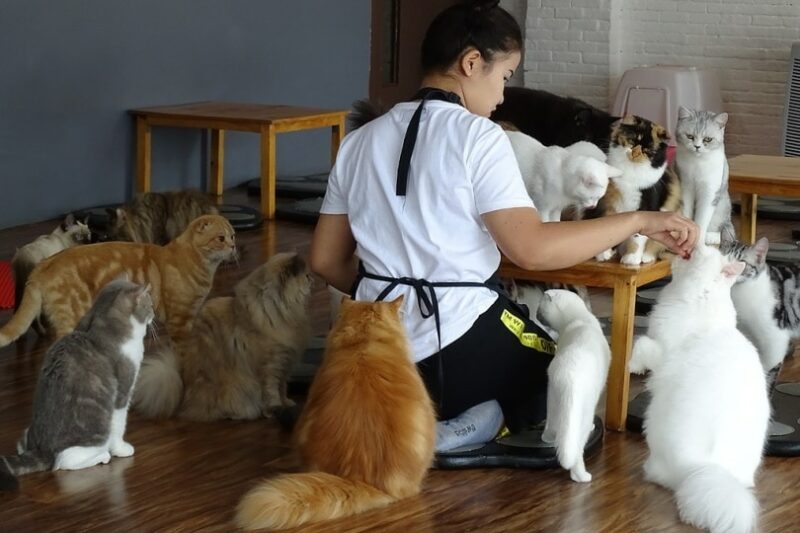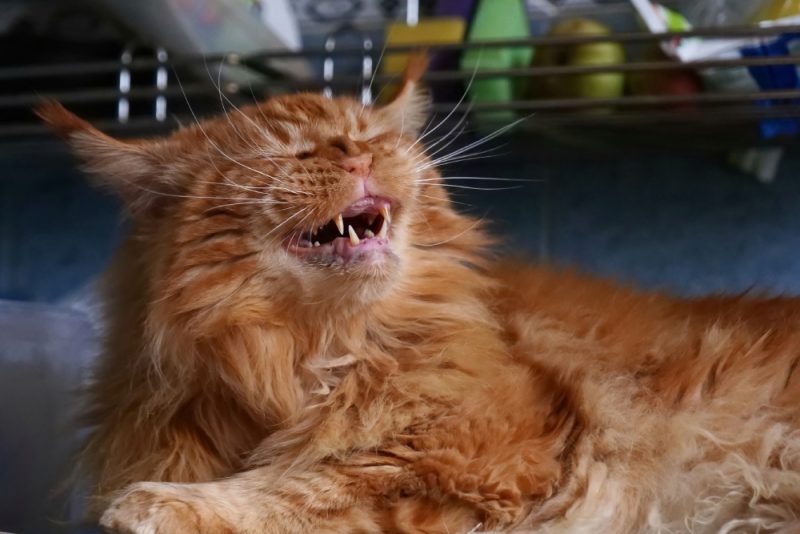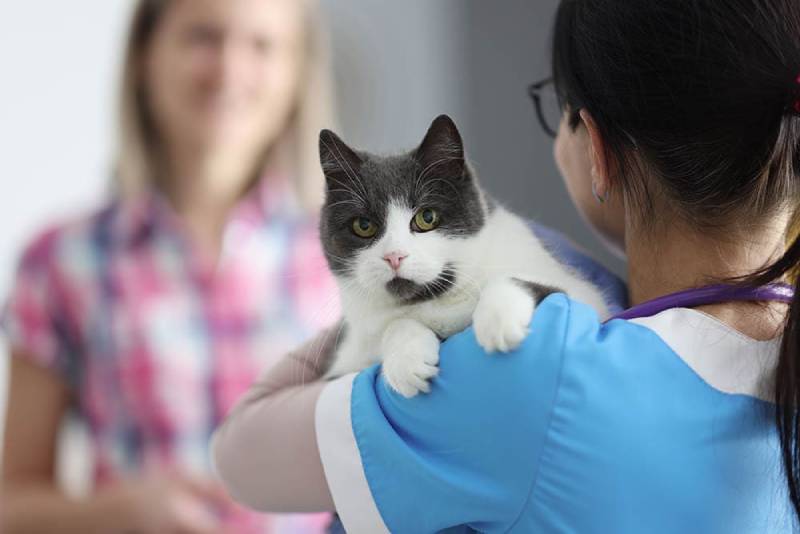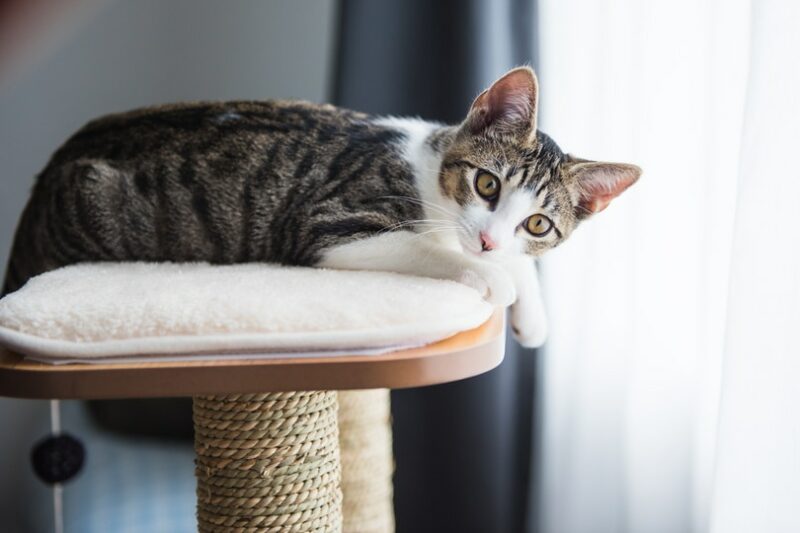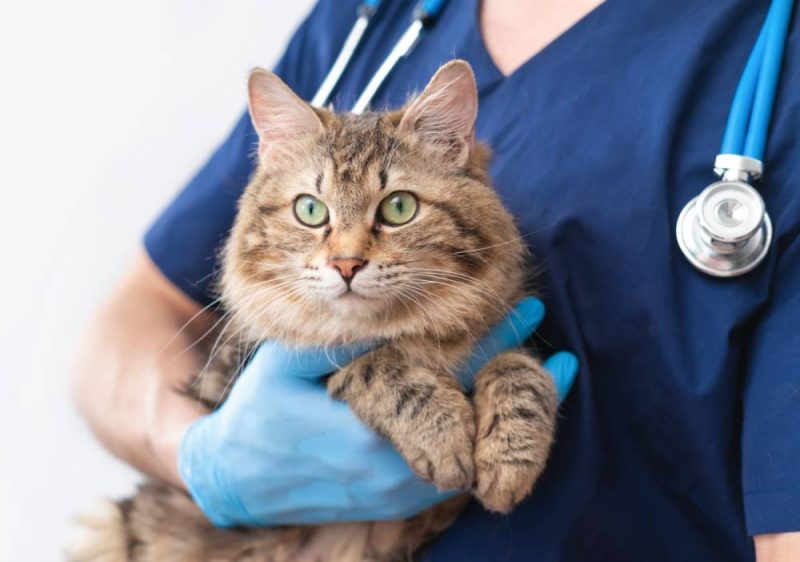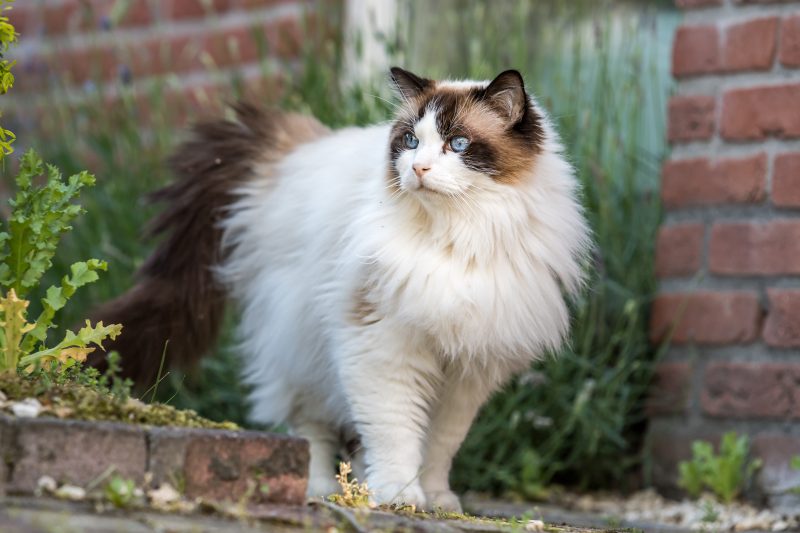In this article
Cats are known to be self-sufficient survivors who can look after themselves quite well. But how do the feral and stray cats withstand the cold while spending all their time outdoors during winter? While they have these fantastic fur coats that keep them warm, how warm can they be when it’s 30°F (or -1°C)? Healthy adult outdoor cats can do an excellent job at surviving cold weather, but on particularly cold days, they need some help.
We will explore how cold is too cold and how we can help any cats that don’t have a home to survive the winter.

Stray & Feral Cats
Indoor cats have a clear advantage, even when they go outside, as they always have the option of coming straight back in if it’s too cold out. Stray and feral cats do not have this option. Before we go any further, we should differentiate between stray and feral cats.
- Stray cat: A stray cat has been a pet at some point but has lost their home or ow They will have been socialized to people and will be more inclined to approach humans, but they can become feral if separated from people for too long. However, there’s always the chance for a stray to be reintroduced back into someone’s home.
- Feral cat: These cats have never been introduced into a home and have had little contact with peop They very rarely become pet cats. They are never truly comfortable around people, but a kitten born to a feral cat can still be socialized at an early age.
It can be difficult, at times, to tell the difference between stray and feral cats since they will both act skittish. Some stray cats might still approach with their tails held high, but not all of them will.
If you notice a cat without a collar, it could indicate a stray or feral cat, but some indoor/outdoor cats don’t have collars either, so it isn’t always the best way to judge.
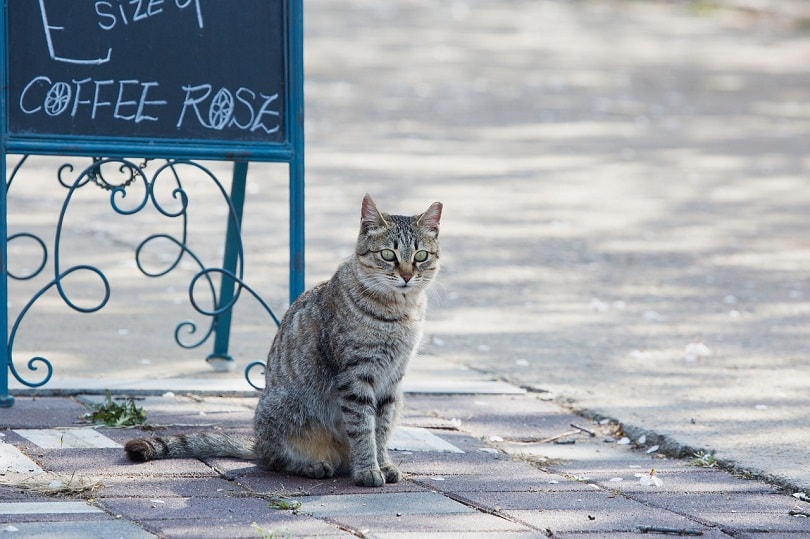
Cold Weather Extremes
Cats have survived extreme temperatures for thousands of years. In extreme heat and cold and barren landscapes with little prey, cats have adapted and thrived thanks to their exceptional survival skills and instincts.
There is not any specific temperature that is too cold for cats since there are several factors that affect how they handle the cold. Everything from the cat’s health, age, body condition, and fur type are all elements that determine how well she can withstand extremely cold weather.
However, anything below 45°F (7°C) is thought to be edging into dangerous territory for most cats. This is when the risk of hypothermia can occur, which is when a cat’s body temperature drops to below 97.7°F (36.5°C).
How Do Cats Do It?
Most cats can keep warm by finding small, cozy spots to curl up in, which allows them to retain their body heat. They search out any nook or cranny to help keep them warm and out of the wind. Some feral colonies will find the warmest place and huddle together to keep each other warm.
Barn cats have the advantage of sharing a space with several large-bodied livestock that raise the temperature inside. These cats might sleep closer to the roof since the heat rises, and not only is it toastier up there, but it gives them a good vantage spot.
However, part of living through cold weather also includes accessing water and food, which is where the cats usually run into trouble. The natural prey of feral cats, particularly mice, tend to spend time burrowing into the ground or finding warmth and food inside houses.
They become harder to find, and freshwater will freeze up, which is problematic as food and water are necessary for basic survival. These cats use up most of their energy just to stay warm, so food and water will not only give them the extra energy they need but will also contribute to insulating them with extra fat and a thicker coat.
This is where they usually need help from humans. Many people create small cat shelters in their yards or keep the doors open for their sheds and garages to give feral and stray cats easy access to warmer places. Plus, keeping a supply of food and water available will go a long way to ensure the survival of these cats.
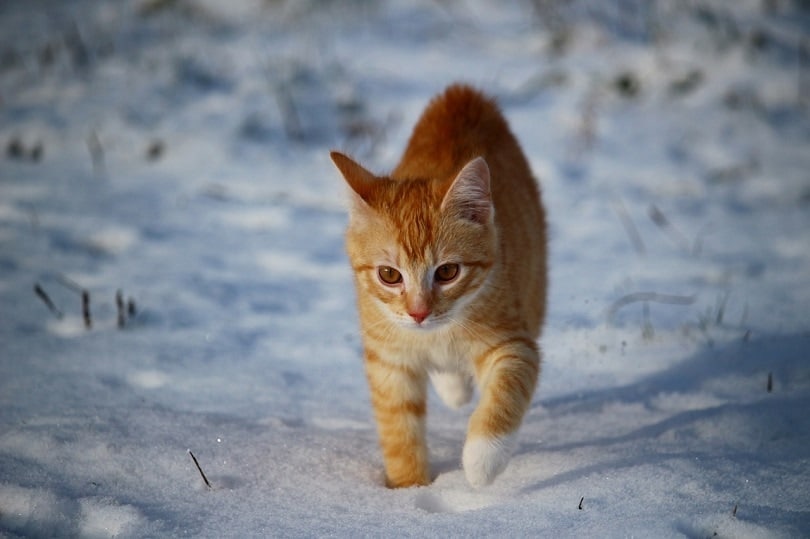
How You Can Help Outdoor Cats Survive the Cold?
Some stray cats have been known to seek out help when the weather has become frigid. If you have a cat that shows up and wants to come inside, and as long as you are comfortable with it, you could be saving his life by providing him with a warm space inside. You might consider setting up a private, enclosed area to keep the cat safe and warm. Bear in mind, particularly if you have pets, you won’t know if this cat carries any parasites or diseases.
Plus, you need to respect the comfort level of the cats. Many of them might want to come and go as they please and have no interest in becoming a pet. You cannot force a cat to become a lap cat. Feral cats, in particular, are much happier living outdoors and, as discussed earlier, have no interest in human interactions.
Shelters
Making a small shelter for stray and feral cats is a great way to help them survive the winter. It can be a doghouse, a small shed, or one you make yourself. One of the more popular homemade shelters is an outdoor storage container with a lid.
- Cut a hole no larger than 6 inches across on the side of the container and add a small drainage hole in the floor with a nail or drill.
- Insulate the inside with Styrofoam and stuff it with straw (not hay) to fill any gaps.
- The bedding should be straw: avoid blankets, towels, or newspapers (shredded newspaper should be okay, just not folded up paper) since they will absorb heat and moisture. You don’t want a damp shelter.
- Place it on a platform (bricks or a pallet) and consider duct-taping the lid in case of strong winds.
- Try propping the shelter on a slight angle to allow moisture on the lid and inside to run off.
- Keep an eye on the shelter to ensure it is clean and dry. Replace any dirty and wet bedding and ensure the entrance is clear of snow. You don’t want the cats to become trapped inside.

Food & Water
Setting extra food out for outdoor cats will be a tremendous help. Some recommend using dry kitten food because it holds up better in cold temperatures. Keep in mind that canned food will likely freeze if it isn’t eaten immediately, so on particularly frigid days, dry food is the safest bet.
The cats should have access to fresh water at all times. You can use heated bowls to keep the water from freezing or perhaps place a pad that can be heated in the microwave under the bowl. Yet another option is to put the water in a thick rubber or plastic container and change the water frequently.
You could also consider creating a feeding station, which would entail placing the same outdoor plastic container on its side and putting food and water bowls inside. This can help protect the food and provide a slightly warmer place for the cats to eat and drink. Again, there are several tutorials online that show how to install the shelter.
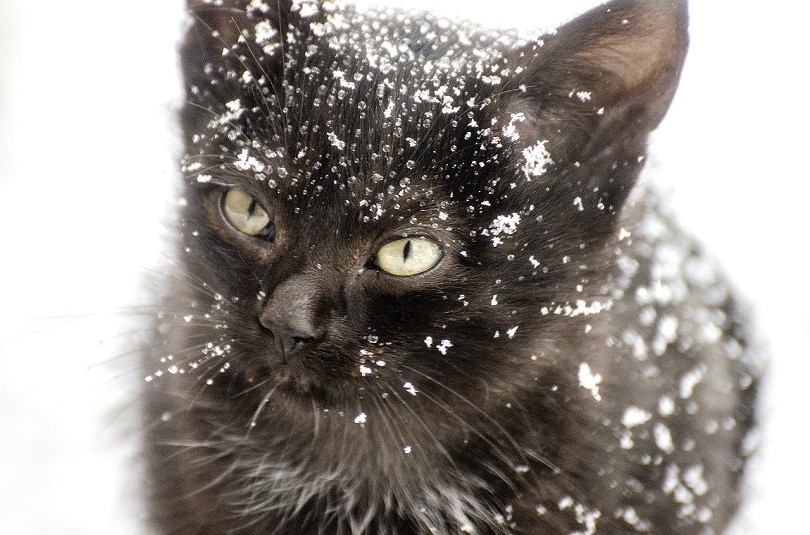
If You Have an Outdoor Cat
If your cat is an indoor/outdoor cat, you should keep him indoors if the weather is dangerously cold or ensure he has safe shelter (such as a warm bed on your porch or in the garage).
You can also take a step to protect your cat’s paws from chemicals, salt, and ice by putting a little lip balm or petroleum jelly on his pads before he goes outside.
A Few Warnings
Always look under or knock on the hood of your car before turning it on, particularly on cold days. Many stray and feral cats find a way inside your engine to keep warm and can be seriously injured if you start your car. They also might curl up on your wheels, so double-checking them is prudent. Knocking hard around the wheel wells and hood can give any cat a chance to bolt.
Garages can be a decent place for cats to take shelter, but be sure you don’t have any dangerous chemicals, such as antifreeze, stored there. Even using antifreeze on your car can be hazardous for neighborhood cats. If they get any on their paws, they will lick it off, which can prove fatal.

Conclusion
We hope this article has given you ideas on protecting stray and feral cats in your community. It is all up to your discretion and comfort level, as well as your time and budget. If you suspect a cat is in trouble, but they won’t let you near them, you can install a shelter or call your local humane society.
If you’ve chosen to help out these cats over the winter months with shelter, food, and water, you’ll make an incredible difference in their lives. This might be all these cats need to get them safely through the cold weather, and it should also give you peace of mind.
Related Reads:
- Could My Cat Survive in a World Without Humans? The Interesting Answer
- Do Cats Like Snow? Safety Tips & FAQ
Featured Image Credit: Татьяна Дмитреняк, Pixabay
